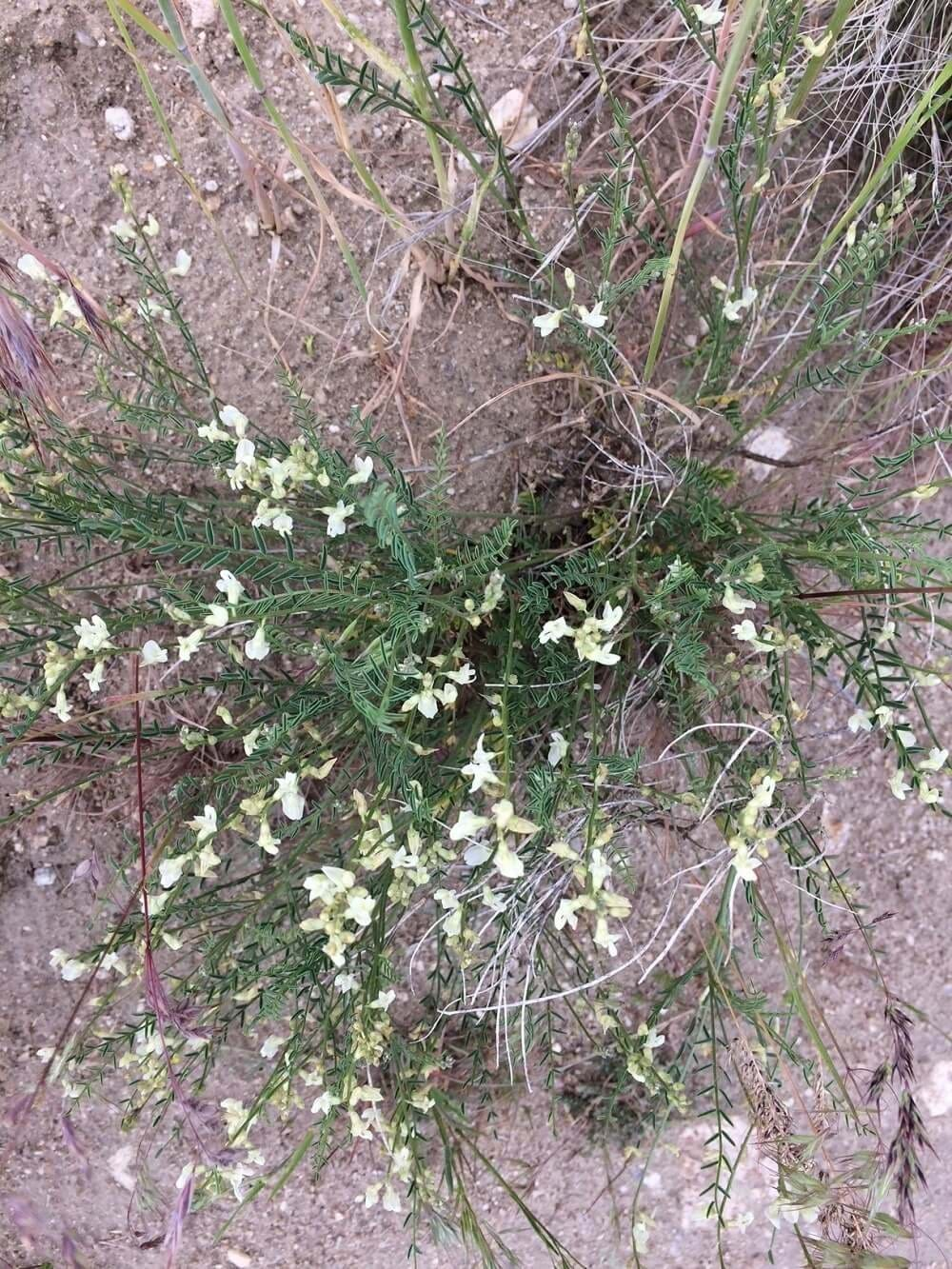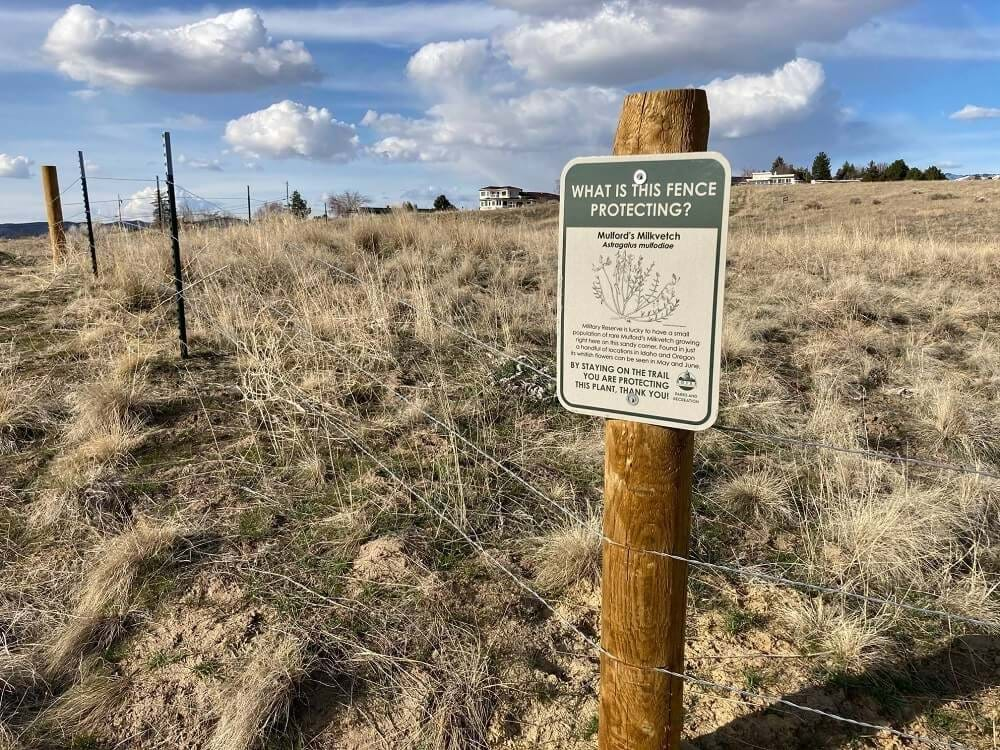Mulford’s Milkvetch (Astragulus mulfordiae)
Discovered by Isabel Mulford in the Boise foothills in 1892, this rare member of the pea family is now known from three widely separated areas in southwestern Idaho and adjacent Oregon (Kennison 1980; Moseley 1989). It is, however, declining in all areas, with the destruction of its habitat in the Boise Foothills being particularly acute.
Monitoring plots for Mulford’s milkvetch were established in the Boise Foothills in 1999 and 2000 with the objective to collect information to support long-term conservation. Data was collected through 2008 and resampling occurred in 2019, 2020 (unpublished data), and 2023, thanks to a collaboration between the City of Boise and the Idaho Native Plant Society.
Monitoring results from 2023 show that Boise Foothills Mulford’s milkvetch populations are in decline likely due to invasive species and long-term habitat disturbance. Negative changes in plant communities are evident when comparing the site monitoring photographs over time.

